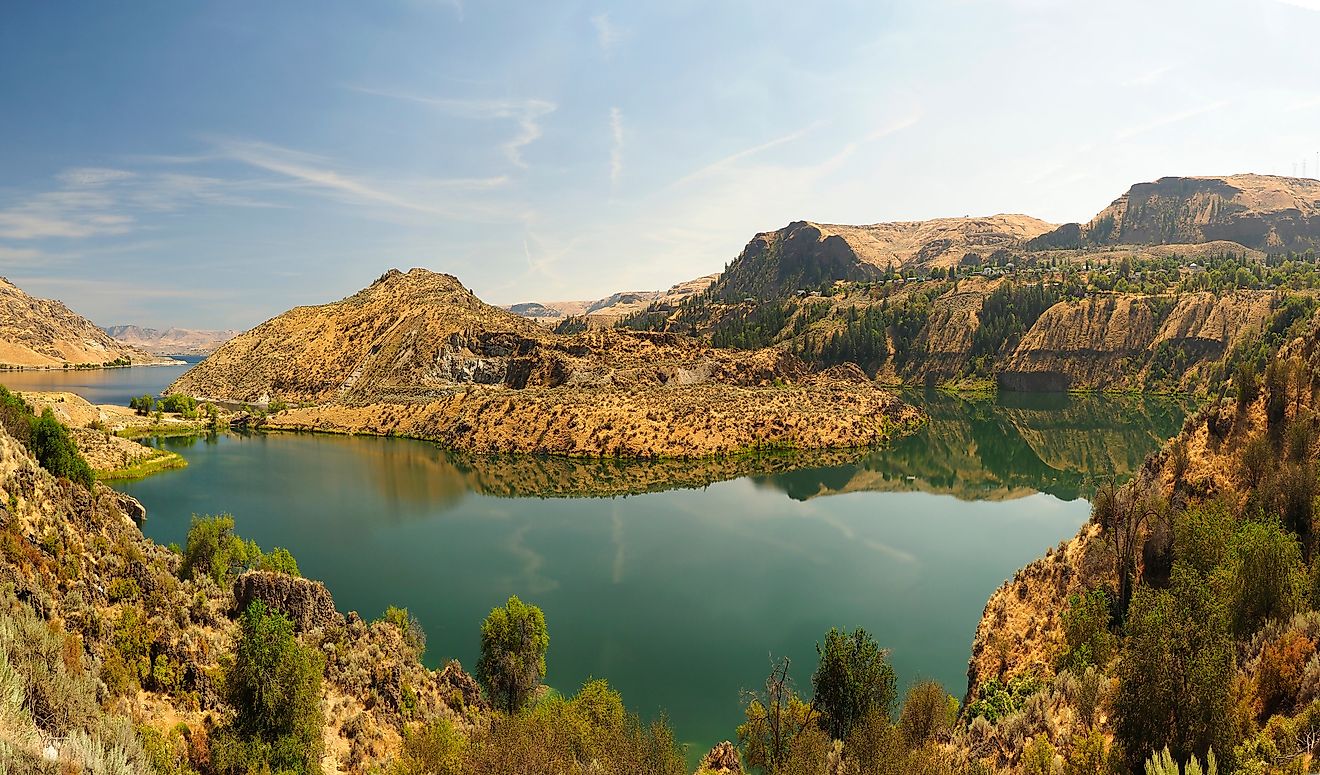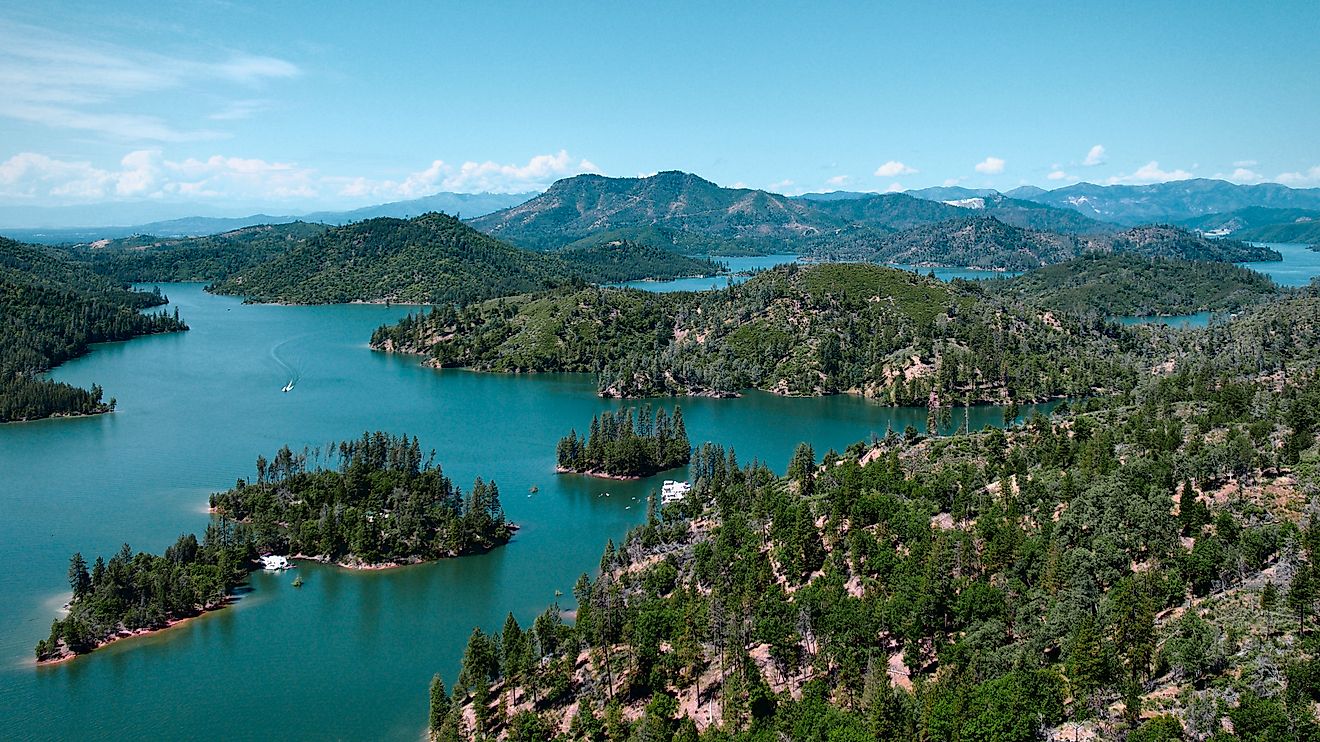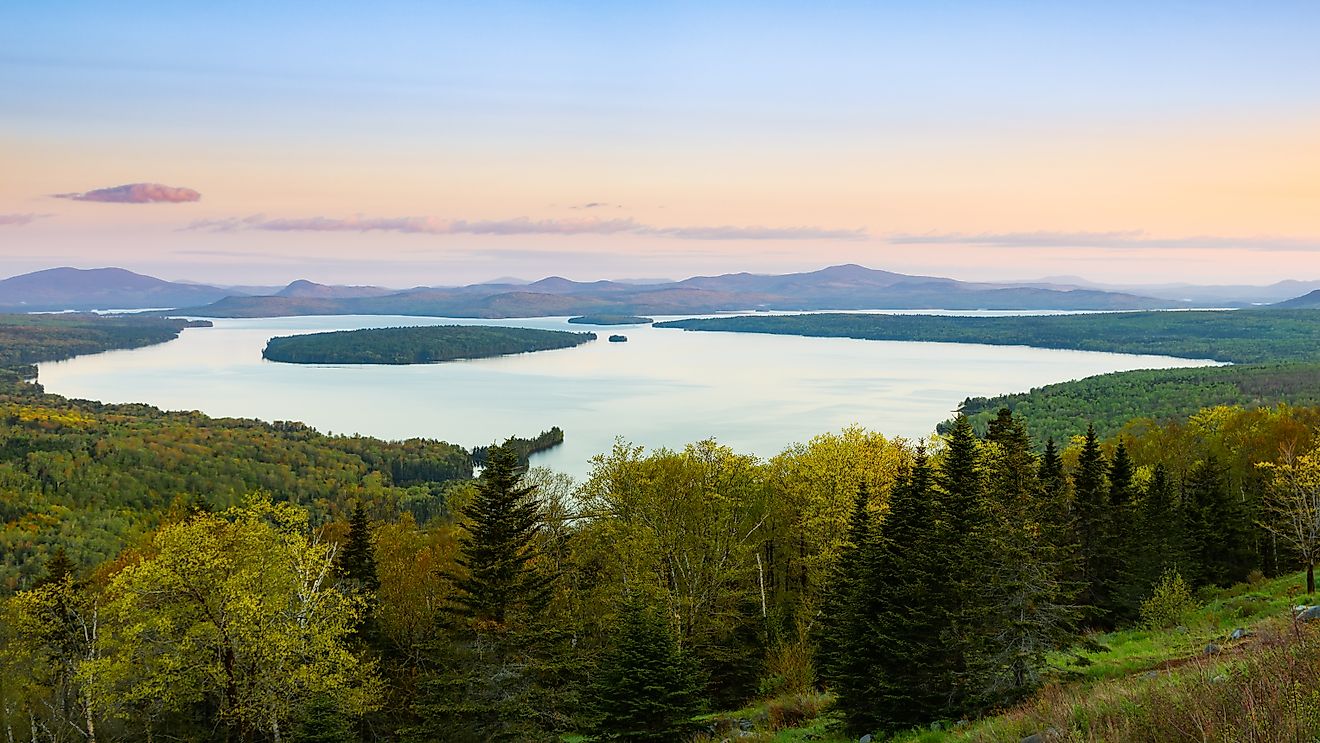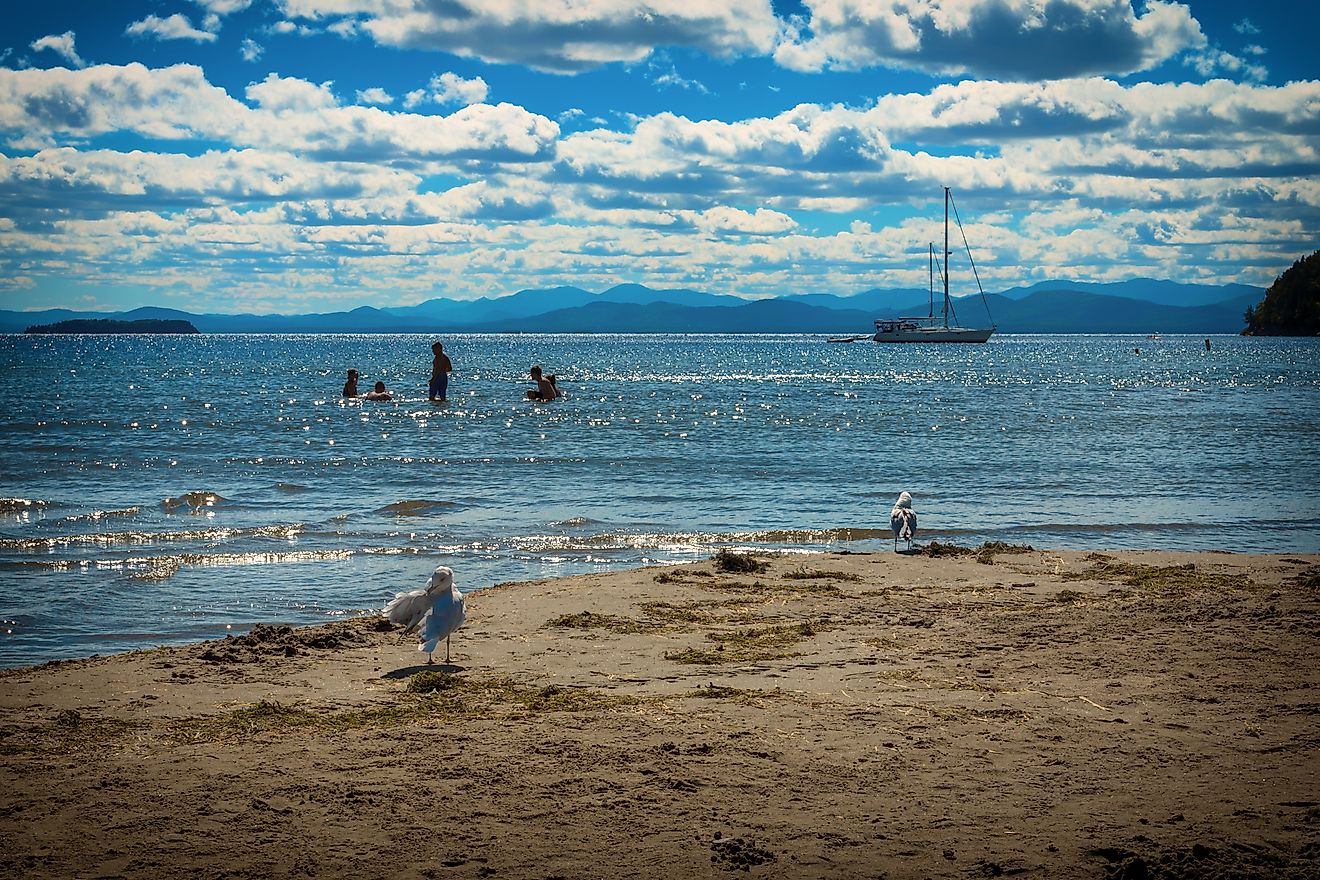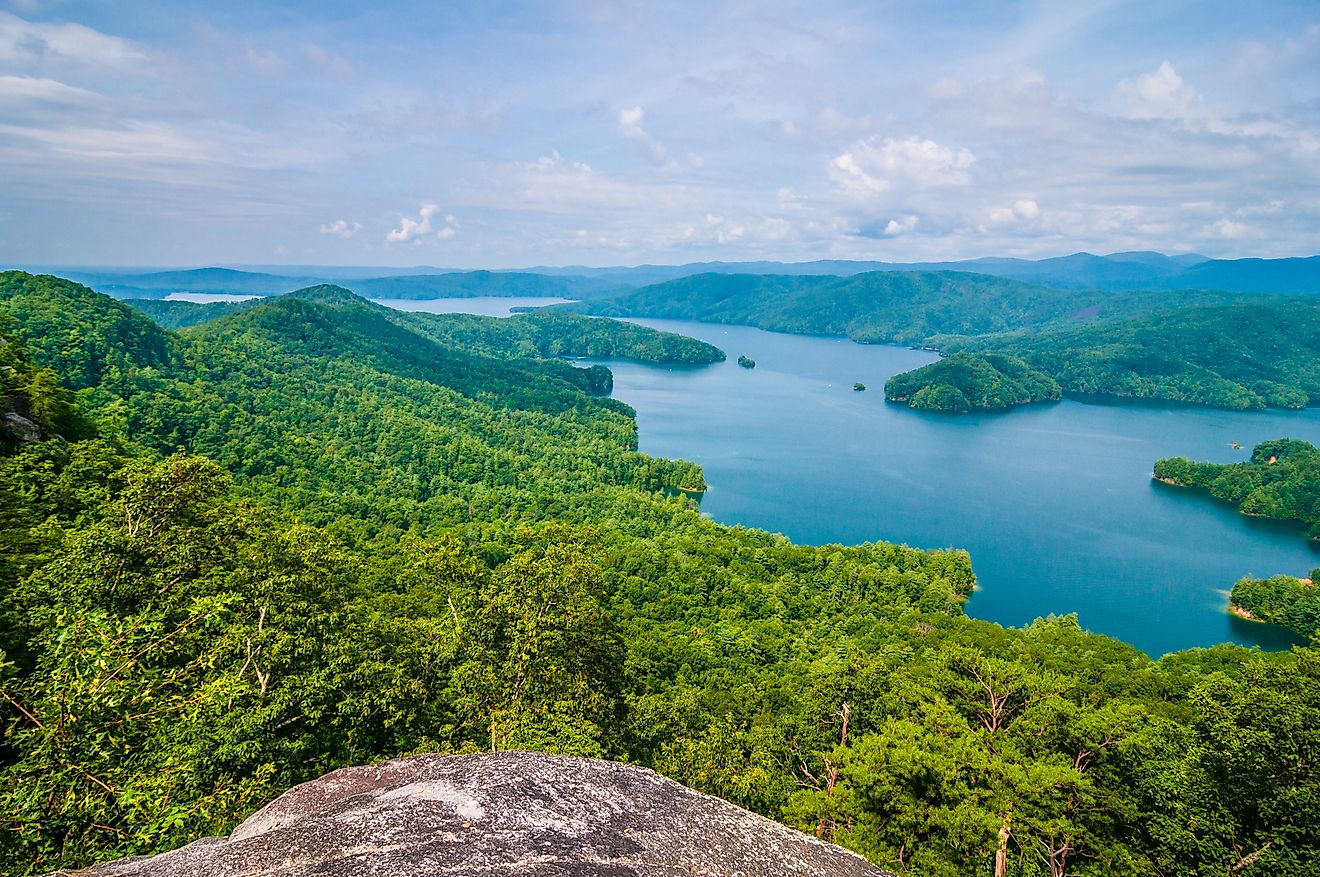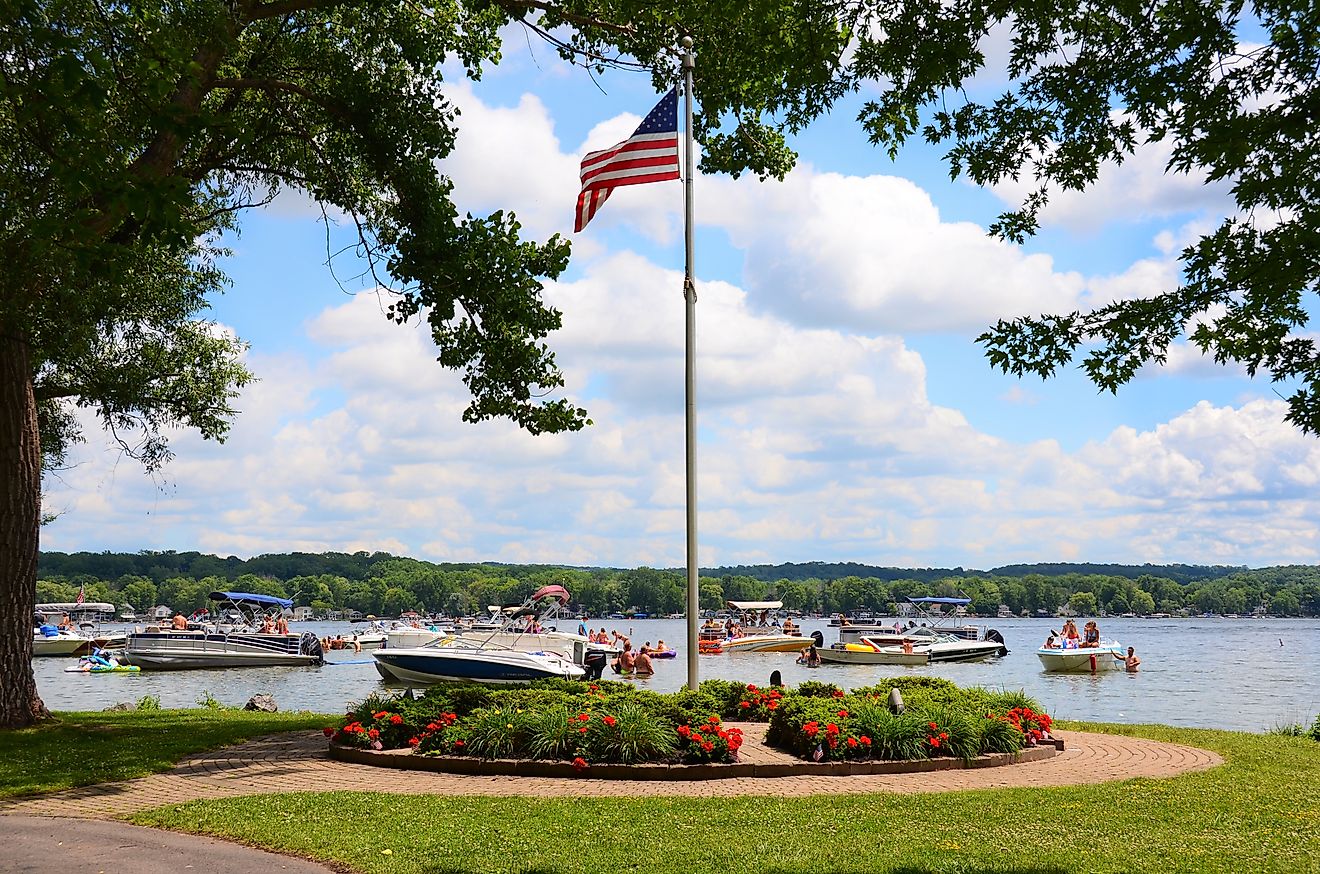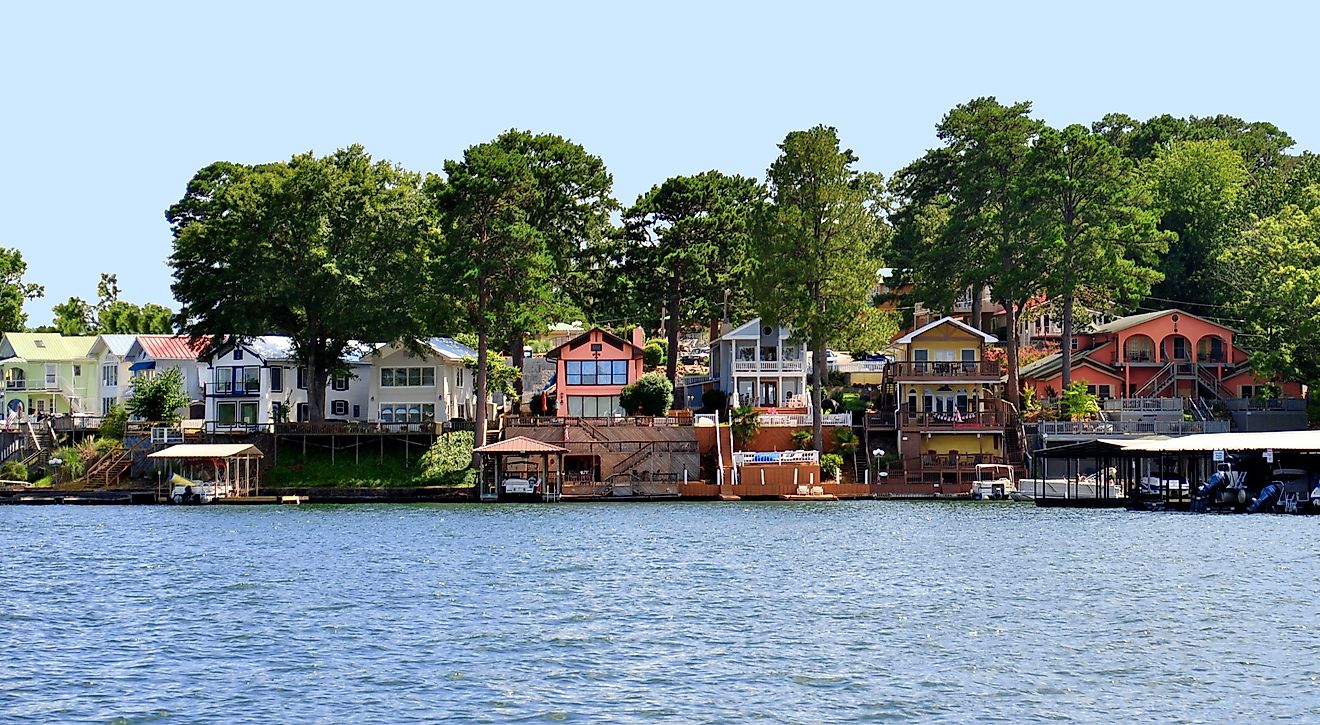
The Only US State Without A Single Natural Lake
If you look at a map of the United States, you will see thousands of lakes dotting the landscape, from the glacier-carved waters of Minnesota to the volcanic basins of Oregon. But there is one surprising state that does not have a single naturally occurring lake. Every lake you see there was built by human hands. That state is Maryland.
Yes, the same Maryland that is home to the sprawling Chesapeake Bay, countless rivers, and scenic coastal marshes has zero natural lakes. It is an oddity in the US, and the reason why goes back to geology, geography, and a bit of history.
Explore why Maryland has no natural lakes, how it compares to other states, the role human-made lakes play there, and some of the best places to visit if you still want to enjoy lake life in the Old Line State.
Why Maryland Has No Natural Lakes
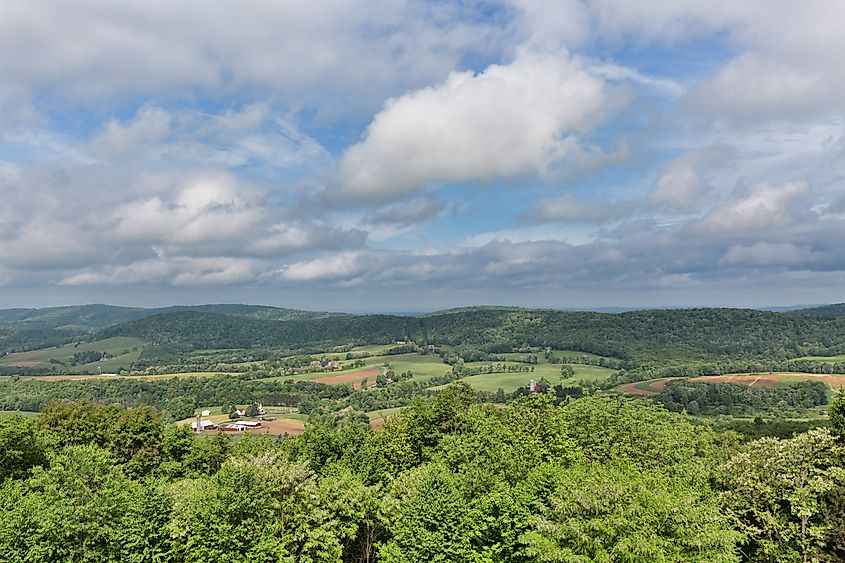
The absence of natural lakes in Maryland is not due to a lack of water. The state has over 100 rivers and streams, a long stretch of Atlantic coastline, and one of the largest estuaries in the world. Instead, the main reason is its geology.
During the last Ice Age, glaciers carved out thousands of lakes in the northern United States. These ice sheets gouged depressions in the land, which later filled with meltwater. But the glaciers never reached Maryland. The southernmost edge of the glaciers stopped well to the north, sparing Maryland from the lake-carving action that shaped much of the Midwest and New England.
Maryland also lacks the kinds of natural basins that form lakes in other regions, such as volcanic craters or large sinkholes. Its rolling hills and low mountains drain water quickly into rivers and tidal systems rather than trapping it in natural depressions.
A Landscape Shaped by Rivers, Not Lakes
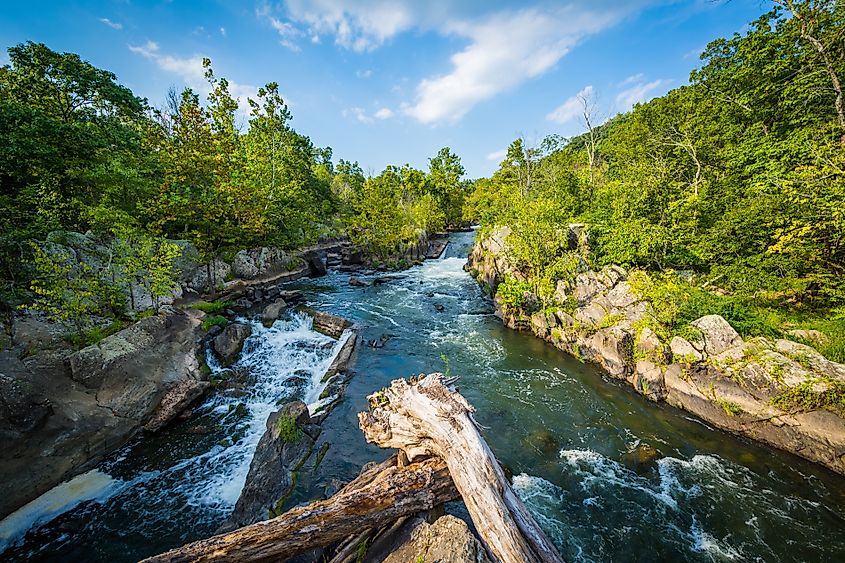
Maryland’s waterways are dominated by flowing bodies of water. The Potomac, Patuxent, and Susquehanna Rivers have shaped the state’s history and economy for centuries. These rivers feed into the Chesapeake Bay, which acts like a giant collector for much of the state’s runoff.
Without natural basins to hold standing water, most inland water in Maryland is moving water. Wetlands, tidal marshes, and estuaries are far more common than stillwater lakes. This creates an environment rich in biodiversity but without the classic glacial lakes seen elsewhere.
The Rise of Artificial Lakes
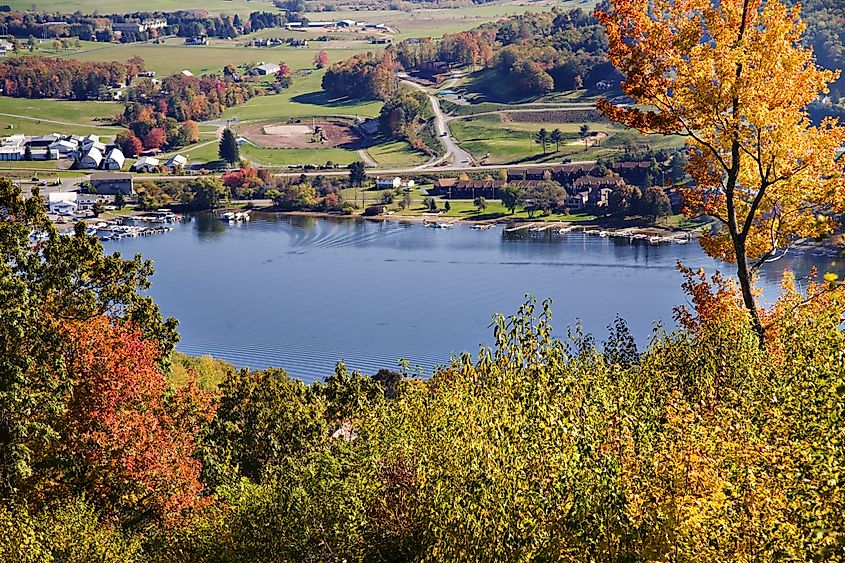
Since Maryland has no natural lakes, every lake you see today is man-made. Most were created for one of three purposes: drinking water supply, flood control, or recreation. These lakes are formed by damming rivers and streams, which allows water to back up and create a reservoir.
The largest man-made lake in Maryland is Deep Creek Lake in Garrett County. Built in the 1920s for hydroelectric power, it is now a major recreational hub. At over 3,900 acres, it is surrounded by mountains and draws visitors year-round for boating, fishing, and even winter sports.
Other man-made lakes in Maryland include:
-
Loch Raven Reservoir: Provides drinking water to the Baltimore area and offers scenic hiking trails.
-
Liberty Reservoir: Another key water supply lake that is popular with anglers.
-
Triadelphia Reservoir: Known for fishing, paddling, and wildlife viewing.
These lakes not only fill the recreational gap left by the absence of natural lakes but also play a vital role in the state’s infrastructure.
How Maryland Compares to Other States
Maryland is the only US state with zero natural lakes, but it is not the only one with very few. Delaware, for example, has only one natural lake: Silver Lake in Dover. Texas, despite its size, has relatively few natural lakes, most of which are small oxbow lakes formed by rivers changing course. The majority of Texas’s lakes are also man-made.
States like Minnesota and Wisconsin, on the other hand, are dotted with thousands of natural lakes due to glacial activity. Alaska, with its vast wilderness, is home to more than 3 million lakes.
Maryland stands out not only because of its total lack of natural lakes but because residents and visitors hardly notice. With the Chesapeake Bay and countless rivers at their disposal, Marylanders still enjoy abundant water-based recreation.
Lake Life in a State Without Natural Lakes
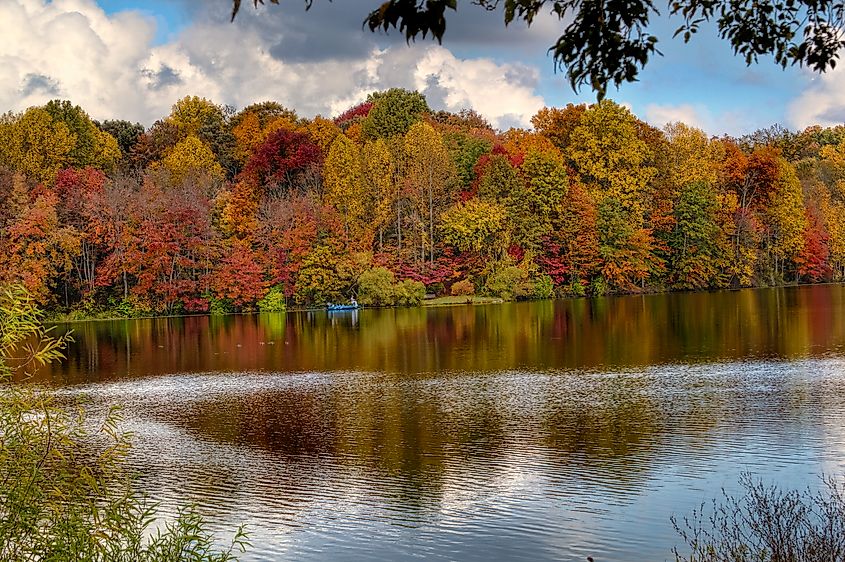
If you are looking for a true lake getaway in Maryland, you will not find a naturally formed one, but you will find plenty of places that feel just as inviting.
Deep Creek Lake
This is Maryland’s crown jewel of artificial lakes. Located in the far western part of the state, Deep Creek offers year-round activities. Summer is perfect for boating, paddleboarding, and fishing for bass and trout. In winter, the nearby Wisp Resort attracts skiers and snowboarders. Autumn brings vibrant foliage, making it a four-season destination.
Centennial Lake
Built in the 1980s in Howard County, Centennial Lake is part of a 337-acre park that offers fishing, boating, and a paved path around the water. It is a favorite spot for families and joggers.
Greenbrier Lake
Set within Greenbrier State Park in Washington County, this 42-acre lake is ideal for swimming, kayaking, and picnicking. Surrounded by forested hills, it offers the kind of serene views you might expect from a natural mountain lake.
What Maryland’s Lack of Natural Lakes Means for the Environment
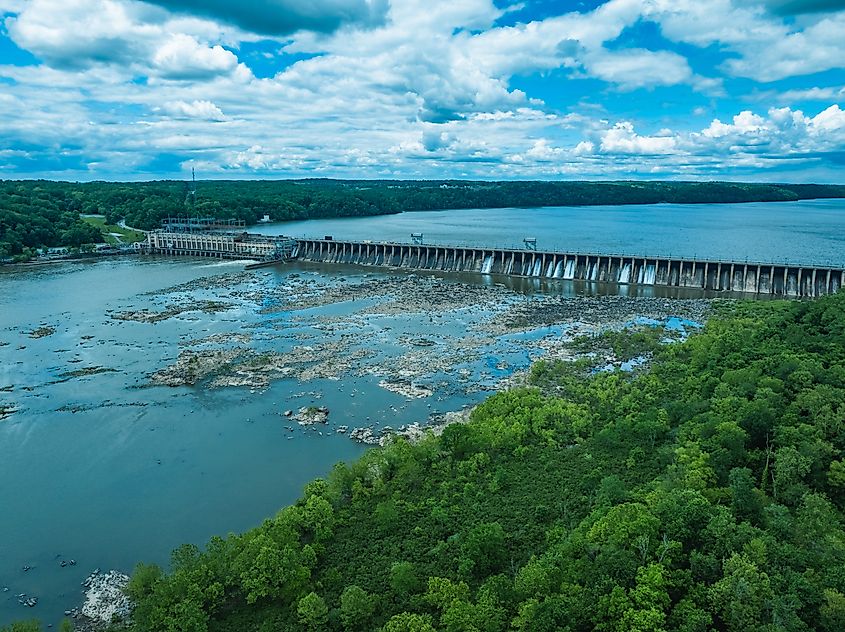
The fact that Maryland’s lakes are all artificial has both benefits and drawbacks for the environment. On the plus side, man-made lakes can be located and sized according to human needs. They can provide reliable water supplies, help manage floods, and create new habitats for fish and wildlife.
However, building lakes often involves flooding natural habitats, altering river systems, and changing water quality. Over time, artificial lakes can fill with sediment, reducing their capacity and requiring maintenance. They also do not replicate the complex ecosystems of natural lakes, which develop over thousands of years.
Still, Maryland’s reservoirs support thriving populations of fish, birds, and aquatic plants. Many are now well-integrated into the landscape and serve as important recreational and ecological resources.
A Bit of History Behind Maryland’s Reservoirs
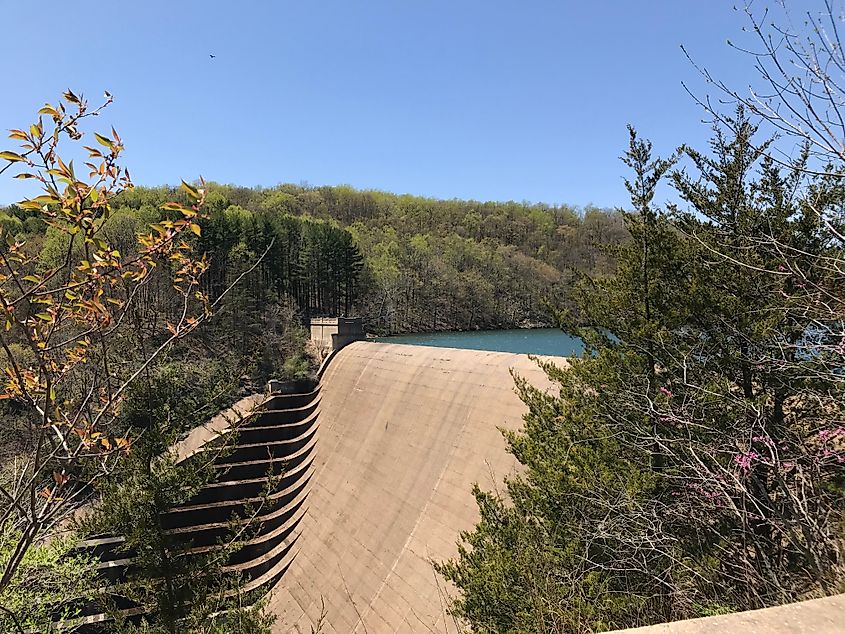
Most of Maryland’s man-made lakes were built in the 20th century during a period of rapid urbanization. As cities like Baltimore and Washington, D.C., grew, the need for reliable water sources increased. Dams were constructed on key rivers to create reservoirs that could store drinking water and help control flooding.
Deep Creek Lake was built by the Youghiogheny Hydroelectric Company in 1925. Loch Raven Reservoir began as a water supply project for Baltimore in the late 19th century and expanded in the early 20th century. Liberty Reservoir was completed in 1954, and Triadelphia and Rocky Gorge Reservoirs were finished in the mid-20th century to serve the Washington, D.C., suburbs.
These projects transformed parts of the landscape and created some of the state’s most beloved recreational spots.
Where to Experience “Natural” Scenery Without Natural Lakes
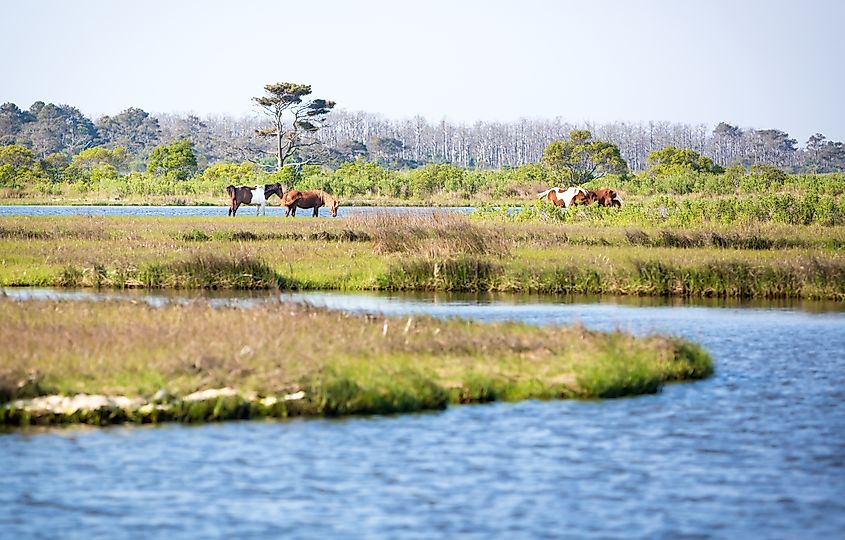
Even though Maryland has no natural lakes, it does not lack for breathtaking natural scenery. If you want the feel of a wild and untouched water setting, you can visit:
-
Assateague Island National Seashore: Famous for its wild horses and pristine beaches.
-
Blackwater National Wildlife Refuge: A vast tidal marshland rich in birdlife.
-
Gunpowder Falls State Park: Offers rivers, waterfalls, and forest trails.
-
Catoctin Mountain Park: Streams and mountain vistas create a rustic, remote feel.
These places offer the peace and beauty many travelers associate with natural lakes, even if they are not formed in the same way.
Final Thoughts: A Lake-Less State That Loves the Water
Maryland proves that you do not need natural lakes to enjoy all the benefits of freshwater recreation. Its man-made lakes provide boating, fishing, and scenic beauty. Its rivers and the Chesapeake Bay offer a connection to water that is deeply woven into the state’s history and culture.
If anything, the absence of natural lakes makes Maryland a little more unique. It is a reminder that every state has its own quirks shaped by geology and history. So, whether you are kayaking on Deep Creek, casting a line in Loch Raven, or simply enjoying a sunset over the Bay, you will find that Maryland’s water experiences rival those anywhere in the country; even without a single natural lake.
